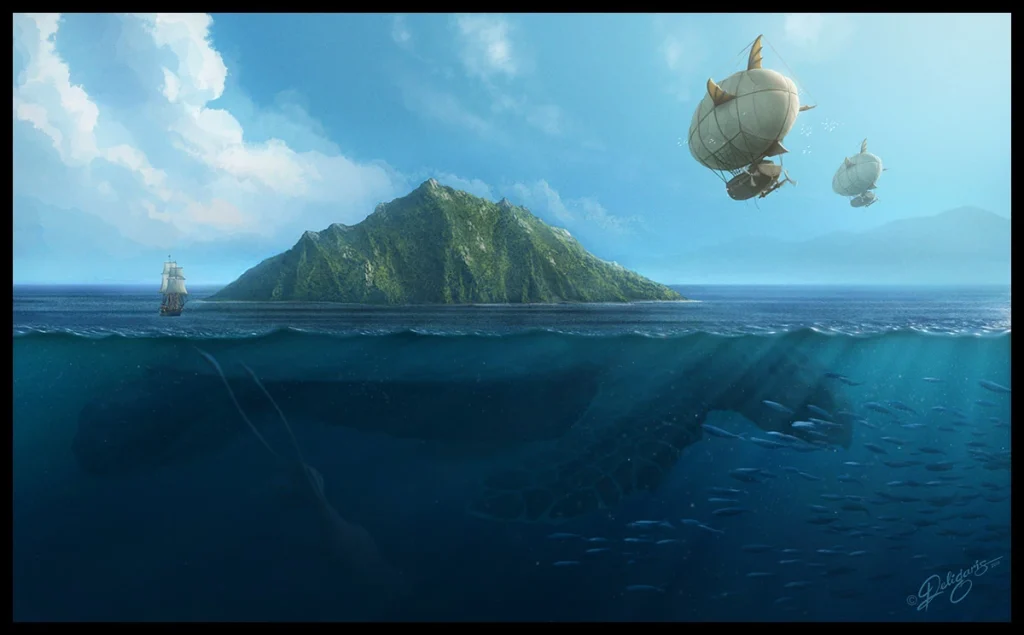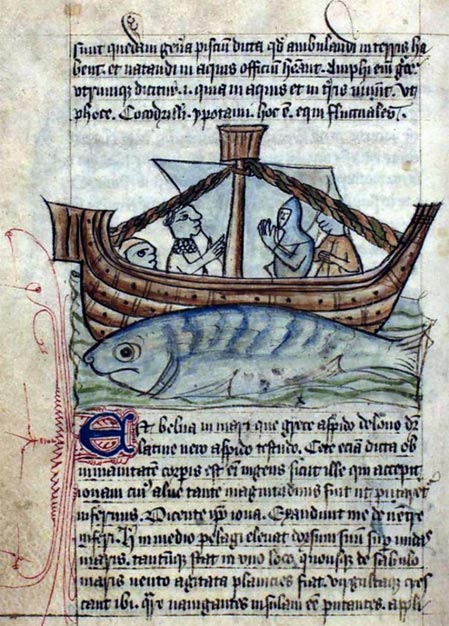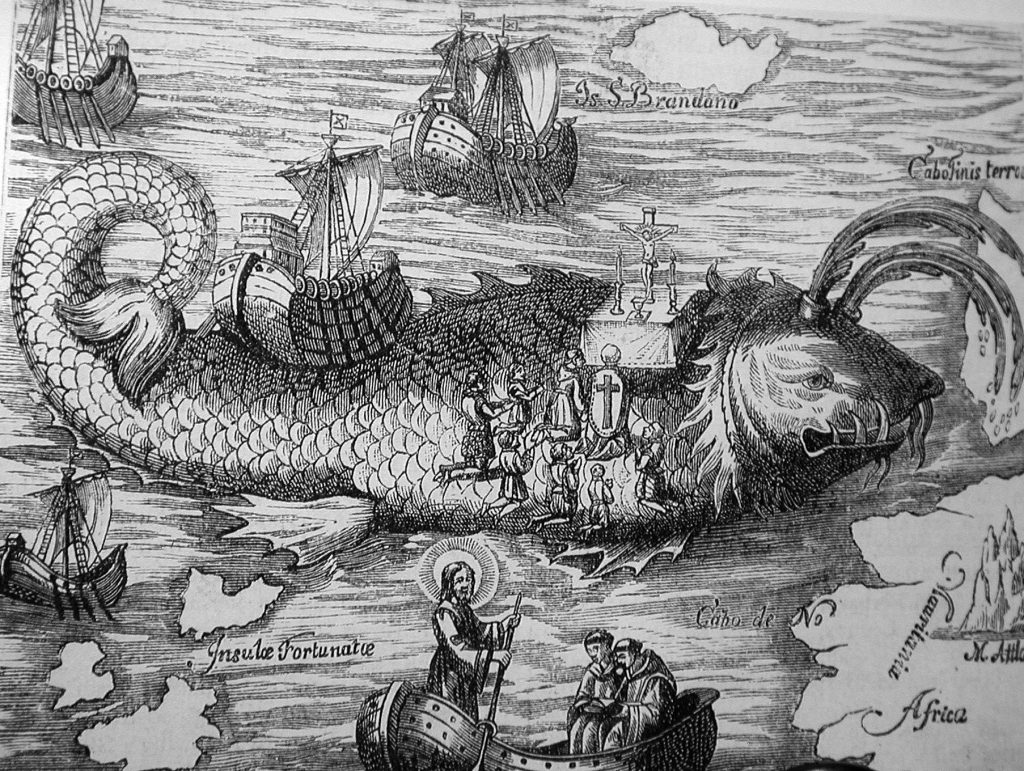Old Sea Legends For Crew is our monthly blog that takes you through the lore and tales of the sea. This time, it’s about the Aspidochelone. Strange name, right? Well, here’s more about the legend…

From Where Does The Name Originate?
The name Aspidochelone seems to come from the combination of the Greek words aspis, which means “asp” or “shield,” and chelone – turtle.
So What Is The Aspidochelone?
According to the Physiologus, a Christian text from the 2nd century AD (authored or compiled in Greek by an unknown writer) the Aspidochelone is depicted as a massive sea creature, resembling either a large whale or an immense sea turtle.
Regardless of its true nature, to those who encountered it, it appeared as a colossal sea monster with enormous spines running along its back. In medieval bestiaries, it is consistently portrayed as enormous, often initially mistaken for an island or a rock.
In the legend found in most texts mentioning the aspidochelone, sailors believed the mythical creature to be an island, disembarked onto it, and kindled a fire to prepare their food. Over time, the creature submerged into the depths to cool itself, inadvertently pulling the ship down and drowning the sailors. According to some of the earliest texts, when hungry, the aspidochelone would open its mouth and emit a sweet fragrance to attract fish.

Where Can Stories Of The Aspidochelone Be Found?
Medieval Christian texts portrayed the aspidochelone as an allegory of Satan, notably strengthened by Isidore of Seville in the 7th century. In Etymologiae, he described whales as immense, monstrous beasts.
Key texts
- Guillaume de Clerc’s 13th-century Bestarie and Bartholomaeus Anglicus’s De proprietatibus rerum were key texts depicting the aspidochelone, with Guillaume describing it as a perilous creature for sailors, and Bartholomaeus likening it to a fearsome, enormous crocodile.
- This depiction reinforced the sea monster as a metaphor for the devil for centuries.
Myth variations across the globe
- The myth of a giant sea creature appeared in various cultures:
- In Irish folklore, Jasconius is a giant fish in the story of Saint Brendan.
- In Greenland, the creature is known as Imap Umassoursa.
- Middle Eastern legends name it Zaratan, appearing in Sinbad the Sailor and works by Al Qaswini and Miguel Palacios.
- In Chilean lore, Cuero or Hide resembles these myths, depicting a vast, flat monster luring sailors to their deaths.

It’s Appeared In Quite A Lot Of Pop Culture
Below might be some pretty niche references, but the sea creature’s influence can be found across many films and games!
- Both The Adventures of Baron Munchausen and Sinbad: Legend of the Seven Seas feature heroes discovering an island that is actually a giant sea monster.
- Tolkien’s poem “Fastitocalon” describes an enormous turtle (originally a whale) that lures victims to its shell before diving deep.
- In The NeverEnding Story, the giant turtle Morla is an Island Turtle living in the Swamp of Sadness.
- In The Legend of Zelda: Majora’s Mask, Link comes across a giant sea turtle resembling a small island.
- World of Warcraft: Mists of Pandaria introduces Shen-zin Su, a giant turtle carrying the Wandering Isle, home to pandaren.
To keep up to date with the latest Superyacht Content News, click here.
Sign up to our Newsletter below:

.gif)


















